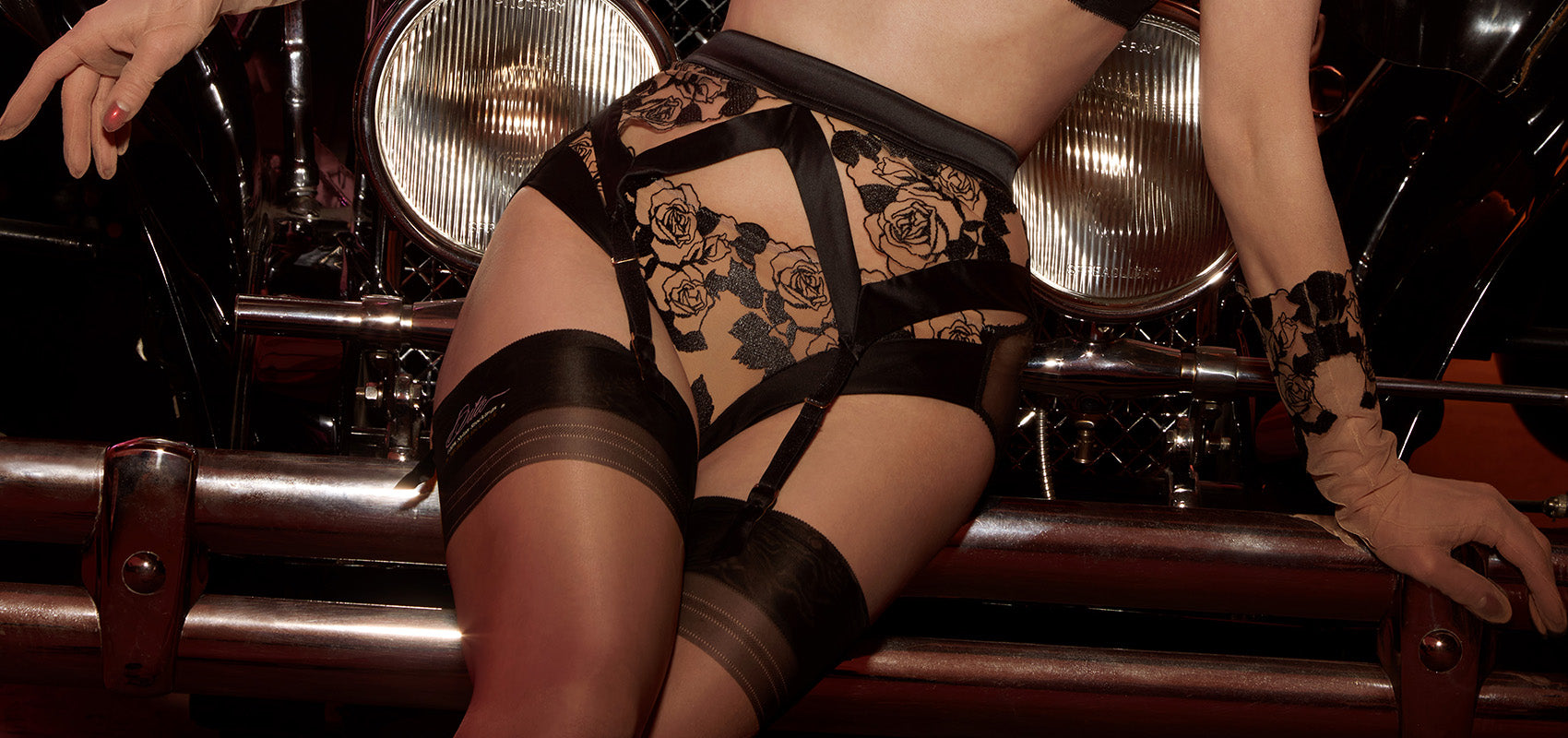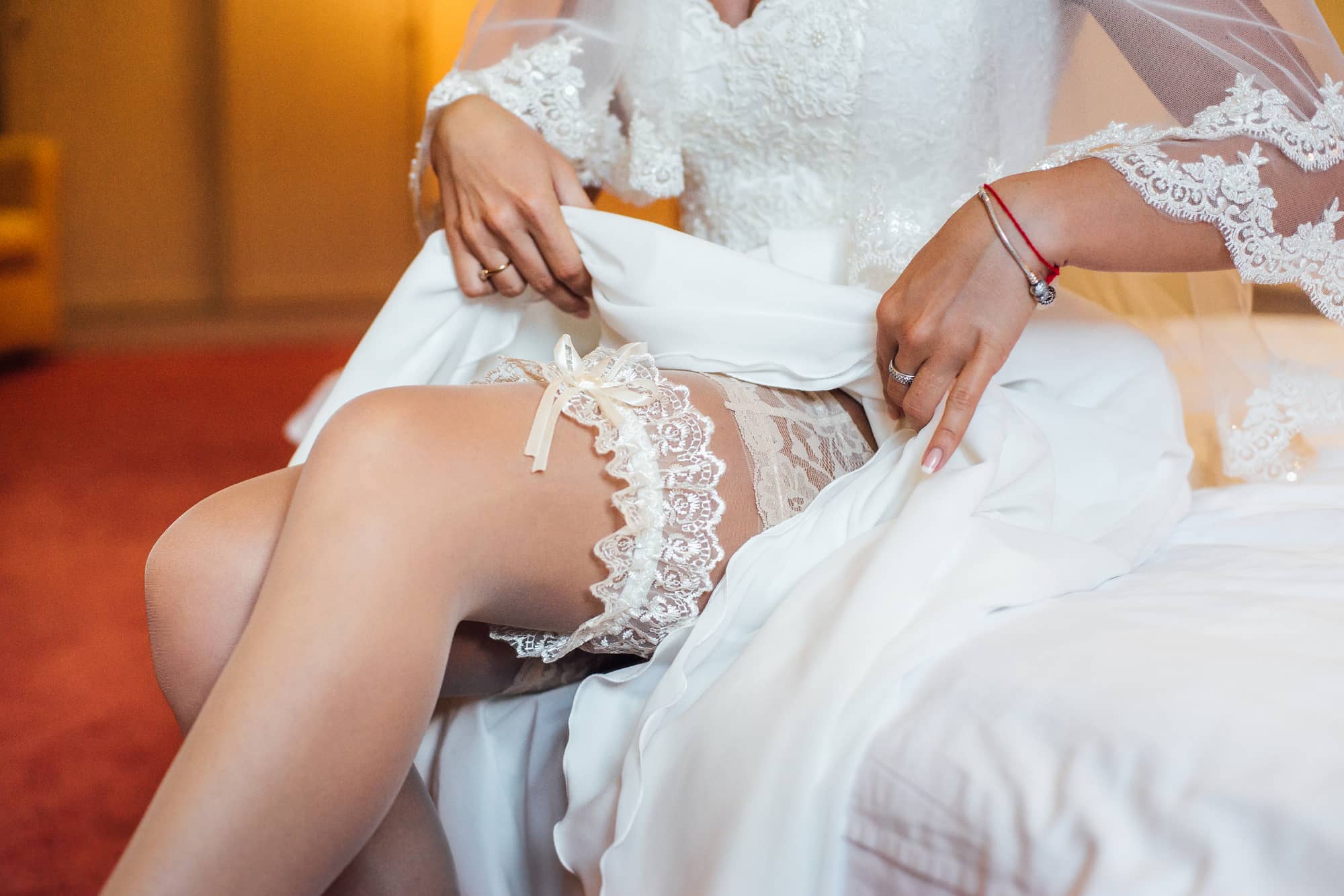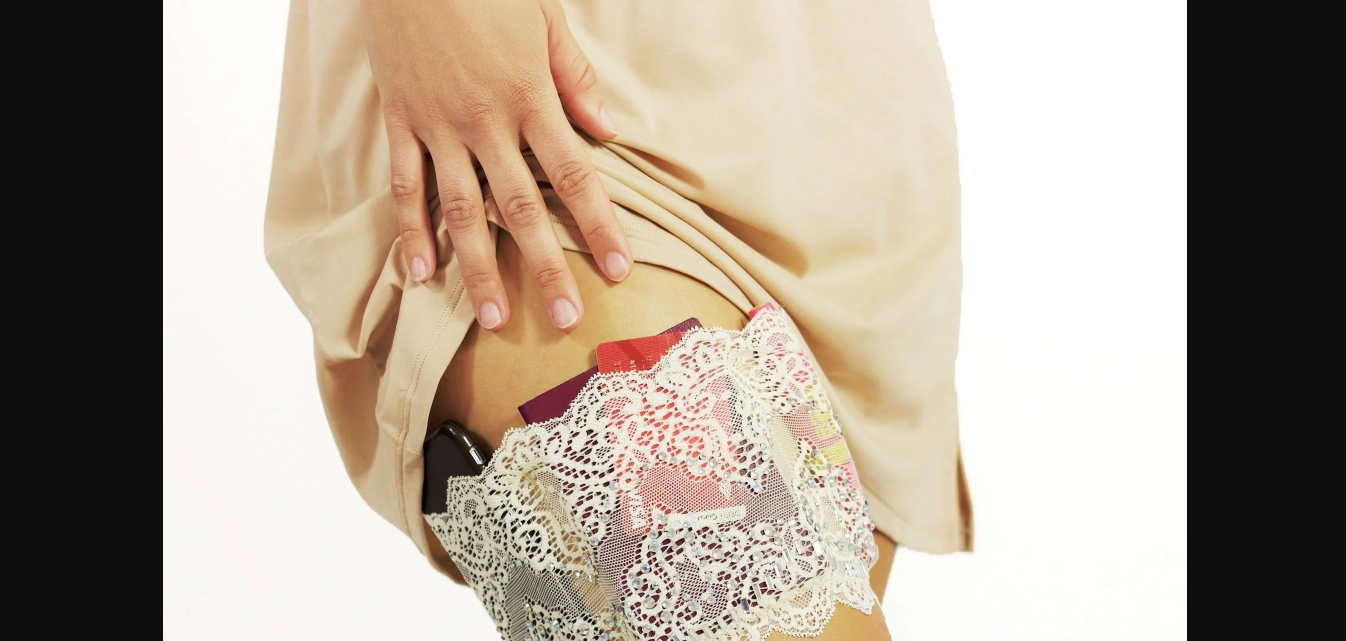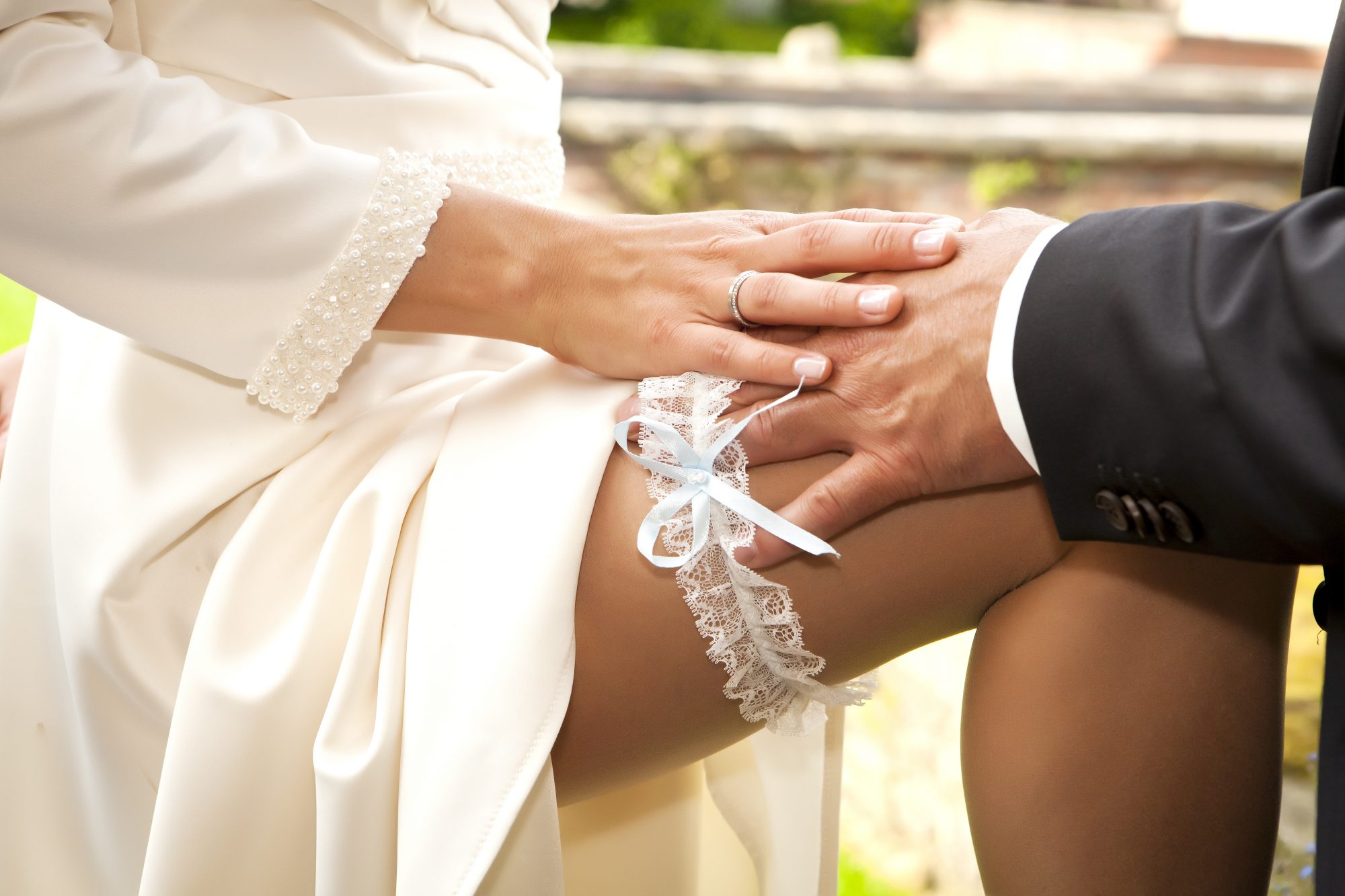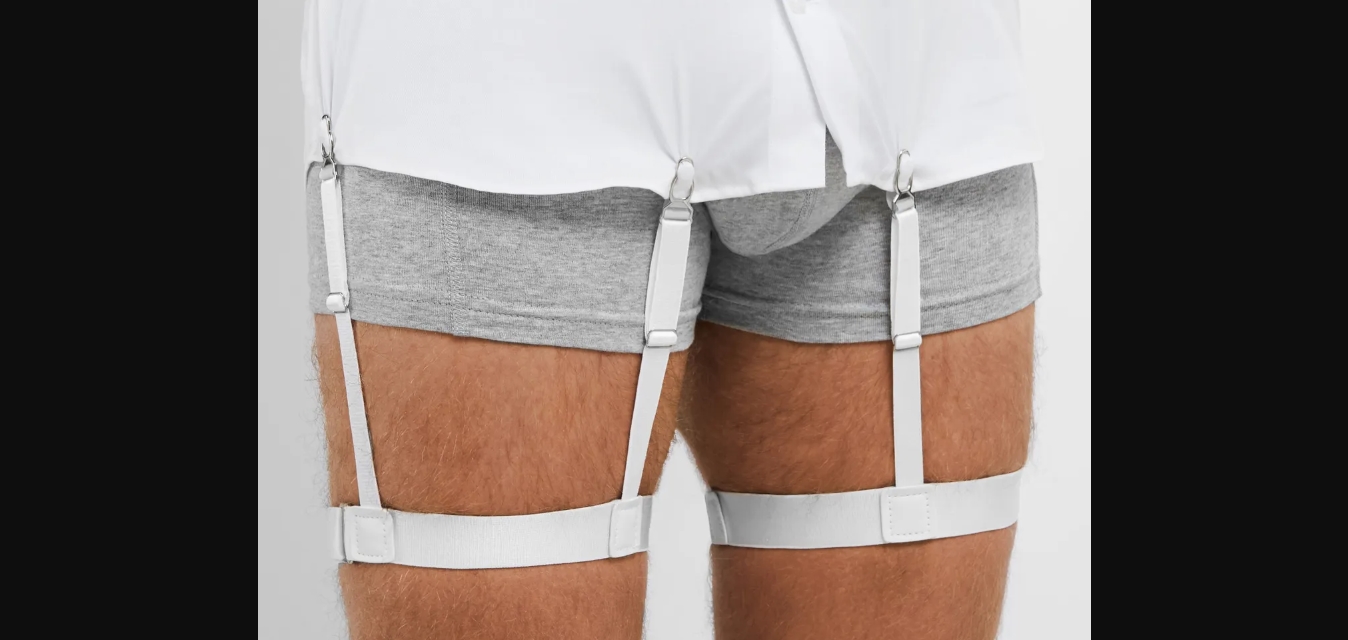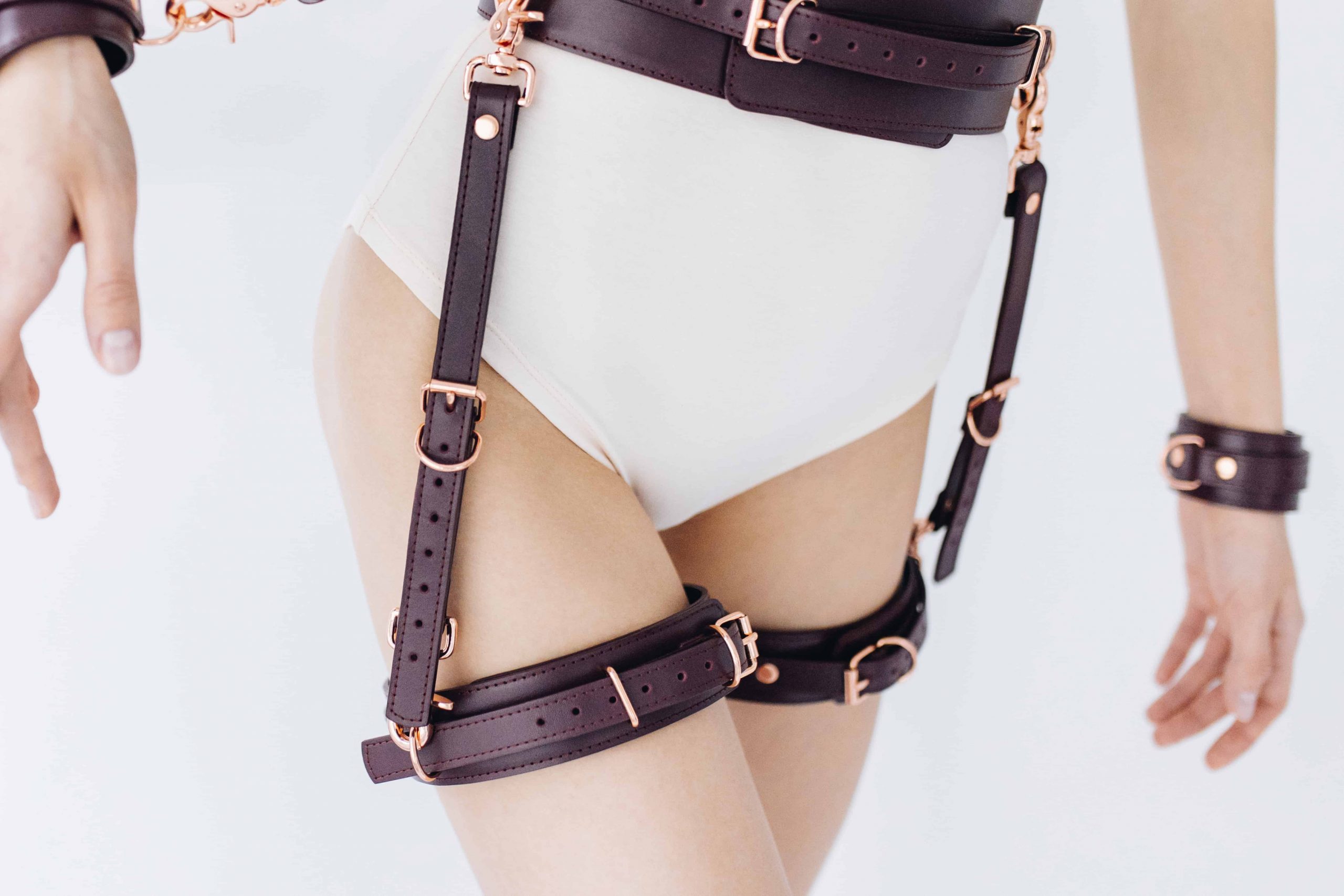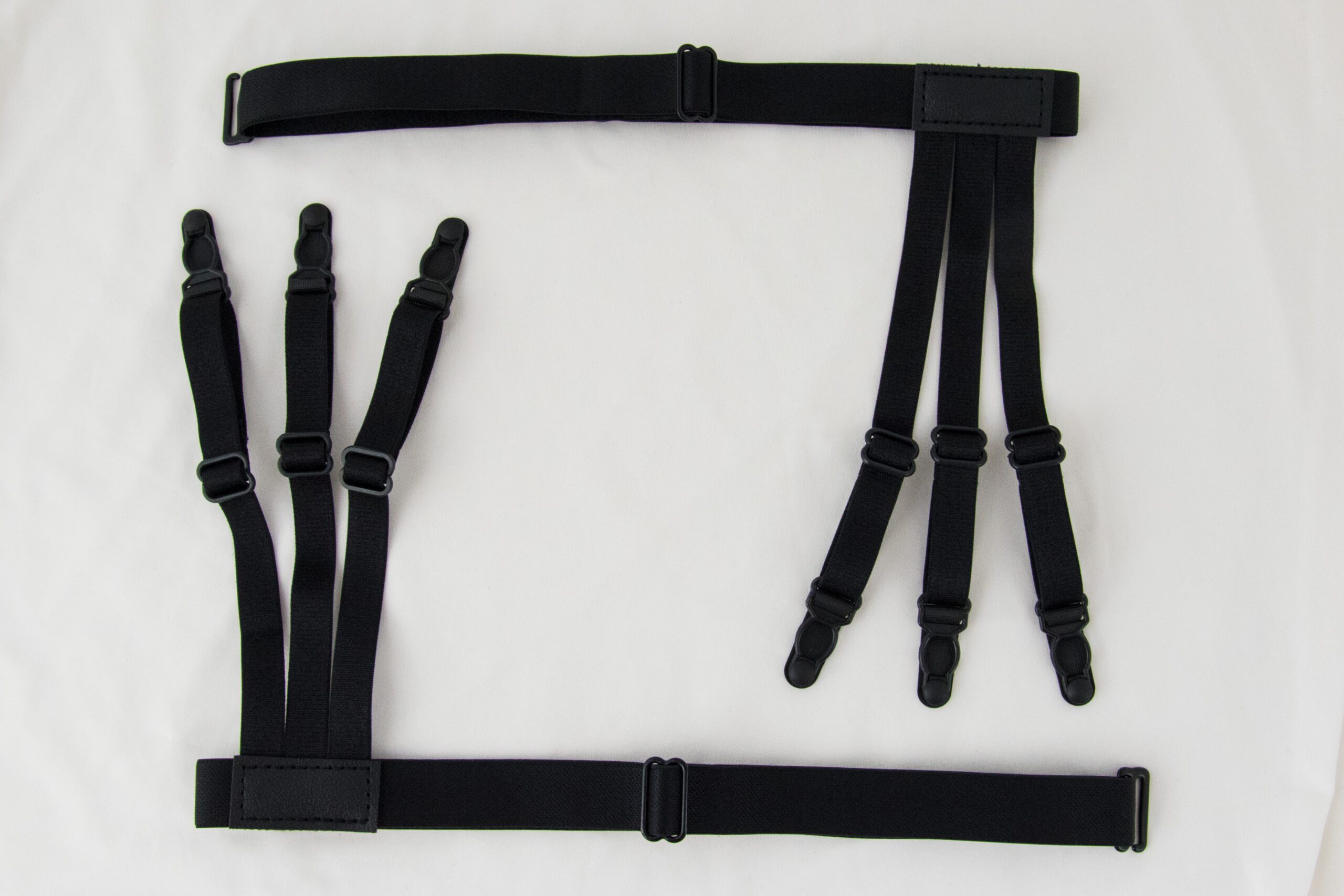Home>Latest Posts>When Were Garters Invented?
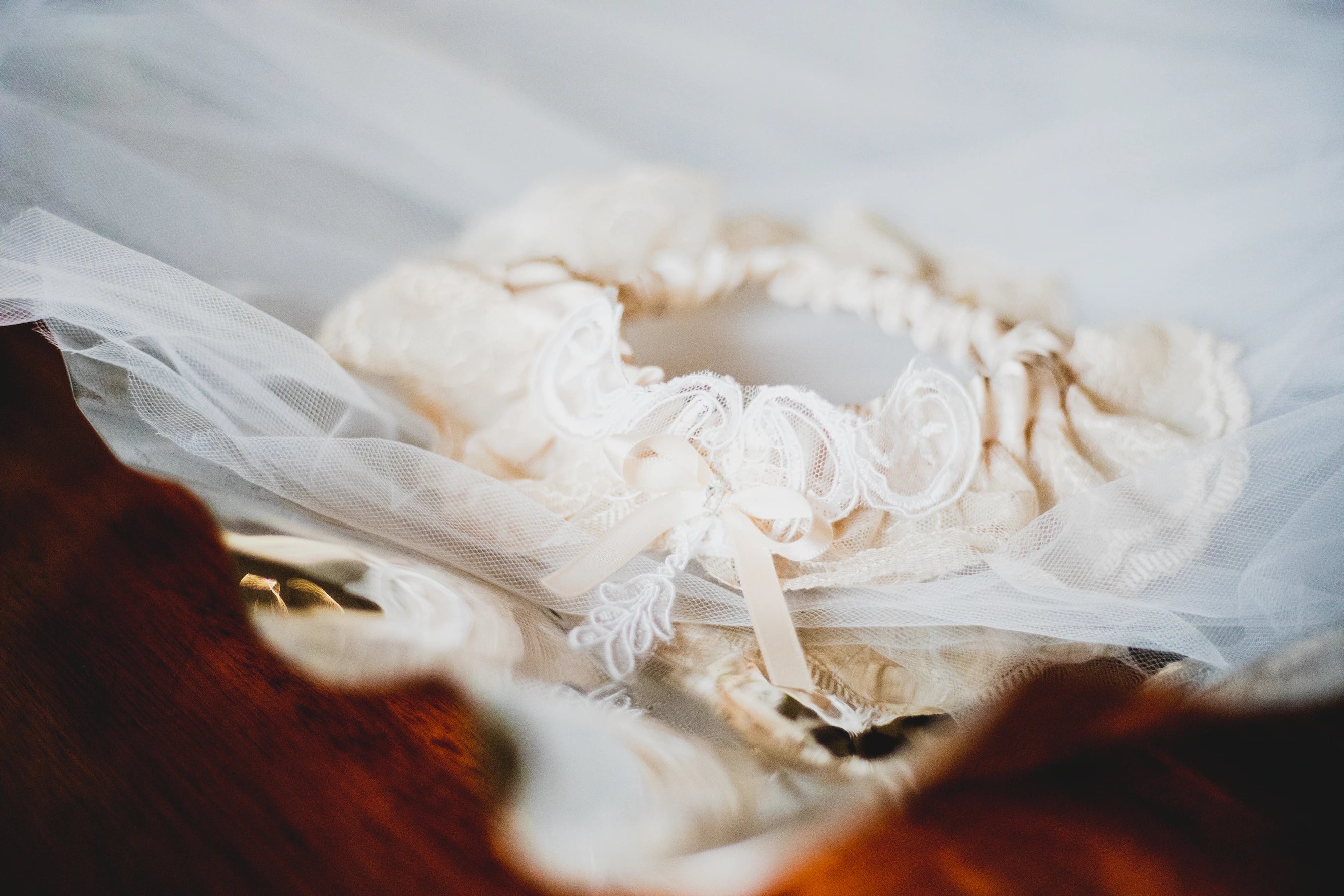

Latest Posts
When Were Garters Invented?
Modified: August 5, 2023
Learn about the history of garters, a fashion accessory for women, and discover when they were first invented. Find out more here.
(Many of the links in this article redirect to a specific reviewed product. Your purchase of these products through affiliate links helps to generate commission for Under-tec.com, at no extra cost. Learn more)
Table of Contents
Introduction
Garters are fascinating accessories that have been a staple in women’s fashion for centuries. These decorative bands, typically worn just above the knee, serve both practical and aesthetic purposes. While today garters are often associated with weddings and lingerie, their history is far more extensive.
The origins of garters can be traced back to ancient civilizations. In fact, some of the earliest evidence of garters dates back to ancient Egypt, where they were worn by both men and women to hold up their garments.
As fashion evolved throughout the centuries, so too did the role and design of garters. From their humble beginnings as functional fasteners, garters transformed into symbols of status and femininity. They adorned the legs of noblewomen and became a fashion statement in their own right.
This article will delve into the captivating history of garters, exploring their evolution from ancient times to the present day. From the medieval era to the Victorian era, we will uncover the various roles garters played in women’s fashion.
In addition, we will discuss the transformation of garters in the 20th century and the impact of modern trends on their design and popularity. By understanding the rich history of garters, we can appreciate the timeless appeal of this unique accessory.
Early History of Garters
The use of garters can be traced back to ancient civilizations such as Egypt and Rome. In ancient Egypt, garters were commonly worn by both men and women to hold up their clothing. These early garters were simple bands made of linen or leather, and they provided practical support for loose-fitting garments.
Similarly, ancient Romans utilized garters, known as fasciae crurales, to keep their garments in place. These garters were often made of leather or fabric, and they served both functional and decorative purposes.
During the Middle Ages, garters began to take on a more significant role in women’s fashion. In the 14th century, garters were worn as part of women’s undergarments to secure their stockings or hose. Made of fabric or ribbon, these garters were tied just above the knee to prevent stockings from slipping down.
Garters during this period also became a symbol of modesty and chastity. It was believed that when a woman wore garters, she was signaling her virtue and purity. As a result, garters became a sought-after accessory among the noblewomen of the time.
Throughout the Renaissance, garters continued to be a prominent part of women’s fashion. They became more elaborate and decorative, featuring intricate embroidery, lace, and even jewels. These ornate garters became a way for noblewomen to display their wealth and status.
During the Victorian era in the 19th century, garters underwent another transformation. With the invention of elastic, garters became easier to wear and adjust. Elastic garters were more comfortable and provided a snug fit, ensuring that stockings stayed securely in place.
In addition to their practical function, Victorian-era garters were also highly decorative. They were often made of silk or satin and embellished with lace, ribbons, bows, and even small charms.
The early history of garters showcases their evolution from simple functional bands to lavish and symbolic accessories. They played an essential role in women’s fashion, holding up stockings and stockings became a subtle expression of femininity. This fascinating journey sets the foundation for the garters we know and love today.
Medieval Garters
During the medieval period, garters took on a more significant role in women’s fashion. They were not only functional but also served as a symbol of modesty, femininity, and social status.
In the 14th century, garters were primarily worn as part of women’s undergarments to secure their stockings or hose. Made of fabric or ribbon, these garters were tied just above the knee. The purpose was to prevent the stockings from slipping down, as well as to provide support and prevent sagging.
Medieval garters were often simple and utilitarian in design. They were made of sturdy materials like linen, wool, or leather to ensure durability. These materials were readily available and served the practical purpose of keeping stockings in place during daily activities.
As garters became more prominent, they began to take on a symbolic significance. During the Middle Ages, modesty and chastity were highly valued virtues for women. The act of wearing garters came to represent a woman’s virtue and purity, as they were worn discreetly beneath their clothing.
Noblewomen of the time often wore garters made of finer materials, such as silk or velvet. These garters were intricately embroidered or adorned with decorative trims to showcase their status and wealth. The more elaborate the garter, the higher the social standing of the wearer.
Garters also became popular accessories for noblewomen to exchange as tokens of affection or friendship. They were often given as gifts during special occasions such as weddings or tournaments. The intricacy of the embroidery and the quality of the materials used reflected the sentiment and importance of the relationship.
During this period, knights would often wear their lady’s garter as a symbol of their devotion and loyalty. The garter was seen as a tangible representation of the knight’s pledge to protect and honor his lady. This practice eventually led to the creation of the Order of the Garter, one of the highest orders of chivalry in England.
Medieval garters played a significant role in defining societal norms and values. They represented not only fashion and practicality but also virtue and status. As garters continued to evolve, they would leave a lasting impact on future generations and shape the perception and importance of this alluring accessory.
Renaissance and Victorian Eras
The Renaissance and Victorian eras were transformative periods for garters, as they underwent significant changes in design, materials, and symbolism.
During the Renaissance, garters became even more elaborate and decorative. They were crafted with intricate embroidery, lace, and even jewels. Made from luxurious materials such as silk, satin, and velvet, these garters were highly sought after by noblewomen who desired to showcase their wealth and status.
The height of garter fashion during the Renaissance was marked by the use of decorative ribbons. Women would attach ribbons to their garters, and these ribbons would extend down their legs. The ribbons were often beautifully adorned with embroidery or small decorative charms, further enhancing their appeal.
Garters in the Renaissance were not only worn as functional accessories but also as elements of seduction. Women would wear garters to entice their suitors, and the act of removing a garter was considered a flirtatious gesture.
As the Victorian era dawned, garters underwent another transformation, thanks to the invention of elastic. Elastic garters made wearing and adjusting them much easier and more comfortable. Women no longer had to worry about tying or fastening their garters; the elasticity provided a snug fit that kept stockings securely in place.
Victorian garters were often made of silk or satin and embellished with lace, ribbons, bows, and even small charms. They were designed to be visually appealing and feminine, with attention to detail and craftsmanship.
Garters during the Victorian era were considered an essential part of a lady’s wardrobe. They were associated with modesty and femininity, and they played a crucial role in maintaining the proper appearance of a well-dressed Victorian woman.
During this time, garters became more accessible to a broader range of women. With the industrial revolution and the advancement of textile production, garters became more affordable and widely available. They were no longer a luxury restricted to the upper class; instead, they became a common accessory among women of all social classes.
Garters in the Renaissance and Victorian eras demonstrate the evolution of this accessory from practicality to symbolism and fashion. They evolved from simple bands to elaborate and decorative accessories. The allure and mystique surrounding garters continued to captivate society, leaving a lasting impact on their popularity and significance.
Garters in the 20th Century
The 20th century brought significant changes to the world of fashion, and garters were no exception. As hemlines rose and women’s fashion evolved, the role and design of garters adapted to suit the trends and preferences of the time.
In the early 1900s, garters experienced a shift from being mainly functional to becoming more decorative and fashionable. With the invention and mass production of nylon stockings in the 1930s, garters became a necessary accessory to hold up these new, sheer stockings.
Garter belts, which included adjustable straps with metal or plastic clips to attach to stockings, became popular during this time. These belts were worn around the waist and provided additional support to keep stockings securely in place.
Garters in the early 20th century often matched or complemented the lingerie sets of the time, crafted from delicate lace, satin, or silk. They were seen as a seductive and alluring undergarment, worn to enhance femininity and evoke a sense of glamour.
During the 1940s, garters continued to be a staple accessory for women. With silk stockings being replaced by nylon due to wartime shortages, garters became even more essential in holding up these new lightweight stockings.
As the mid-century approached, garters began to face competition from the increasingly popular pantyhose. Pantyhose provided a one-piece solution for leg coverage and eliminated the need for garters and stockings altogether. While pantyhose gained popularity, garters remained a preferred choice for special occasions, lingerie sets, or those looking to add a touch of vintage charm.
In the 1950s and 1960s, with the rise of the pin-up and burlesque culture, garters experienced a resurgence in popularity. They became a symbol of sensuality and femininity, often associated with the glamour and allure portrayed by celebrated icons such as Marilyn Monroe and Bettie Page.
By the latter half of the 20th century, garters had become more of a niche accessory, primarily worn for aesthetic purposes or as part of lingerie sets. However, they remained a staple in the wedding industry, with brides incorporating garters into their ensemble as a traditional and symbolic accessory.
The 20th century marked a shift in the role and perception of garters. They evolved from being a practical necessity to becoming a fashionable and seductive accessory. While pantyhose provided convenience, garters retained their charm and continued to be celebrated as a symbol of femininity and elegance.
Modern Garters and their Evolution
In the modern era, garters have continued to evolve, adapting to the changing fashion trends and preferences of women. While they may not be as commonly worn as in the past, garters still hold a special place in the world of fashion and intimate apparel.
Today, garters are primarily seen as a form of lingerie or as accessories for special occasions, such as weddings or formal events. They are often crafted from luxurious materials like lace, satin, or velvet, and are designed to be both visually appealing and comfortable to wear.
Modern garters typically consist of a decorative band that wraps around the thigh, adorned with lace, bows, or other embellishments. They are usually accompanied by detachable straps with clips that attach to stockings, ensuring a secure and comfortable fit.
While traditional garters were primarily tied or fastened, modern garters often feature adjustable closures, allowing for easy customization to fit different body shapes and sizes. This adaptability ensures that women can wear garters with confidence and comfort.
The rise of the lingerie industry and the popularity of boudoir photography have contributed to the continued appeal of garters. They are seen as a sensual and alluring accessory, adding a touch of elegance and seduction to intimate moments or special occasions.
In recent years, there has been a resurgence of interest in vintage-inspired fashion, and garters have experienced a renewed appreciation. Many lingerie brands have embraced this trend, offering a wide range of garter belts and sets that pay homage to the retro styles of the past.
In addition, the inclusivity movement within the fashion industry has led to the availability of garters in a variety of sizes, designed to cater to women of diverse body types. This has allowed more individuals to embrace the glamour and allure of garters, regardless of their shape or size.
While garters may no longer be a daily necessity for most women, they continue to hold a special place in the realm of fashion and intimate wear. Their evolution reflects the changing attitudes towards femininity, sensuality, and self-expression.
As fashion continues to evolve, it will be interesting to see how garters further adapt and reinvent themselves to suit the preferences and desires of modern women around the world.
Conclusion
Garters have a rich and fascinating history that spans centuries. From their humble beginnings as functional bands to their transformation into beautiful and symbolic accessories, garters have remained a part of women’s fashion and culture.
Throughout ancient civilizations, garters served practical purposes, holding up garments and securing stockings. They evolved in medieval times to become symbols of modesty and virtue for women, with noblewomen adorning elaborate garters to showcase their wealth and status.
The Renaissance and Victorian eras brought further changes to garters, with an emphasis on intricate embroidery, luxurious materials, and expressive designs. Garters became intertwined with notions of femininity, seduction, and social standing.
In the 20th century, garters faced shifting fashion trends, from their continued use to hold up nylon stockings to the rise of pantyhose. Despite competition, garters maintained their allure as a symbol of sensuality and glamour, and they became a niche accessory for special occasions or those seeking a touch of vintage charm.
In the modern era, garters have adapted to the preferences and demands of contemporary fashion. They are primarily associated with lingerie, intimate wear, and special events like weddings. Modern garters feature adjustable closures, comfortable materials, and a wide range of designs that cater to diverse body types and style preferences.
While garters may no longer be a daily necessity, their longevity and enduring appeal reflect their timeless elegance and significance. They continue to captivate individuals who appreciate the allure and sensuality of these luxurious accessories.
As fashion continues to evolve, it is likely that garters will continue to adapt and reinvent themselves to suit the tastes of future generations. Whether they remain a nostalgic nod to the past or a bold statement of self-expression, garters will always hold a special place in the world of fashion and intimate apparel.
